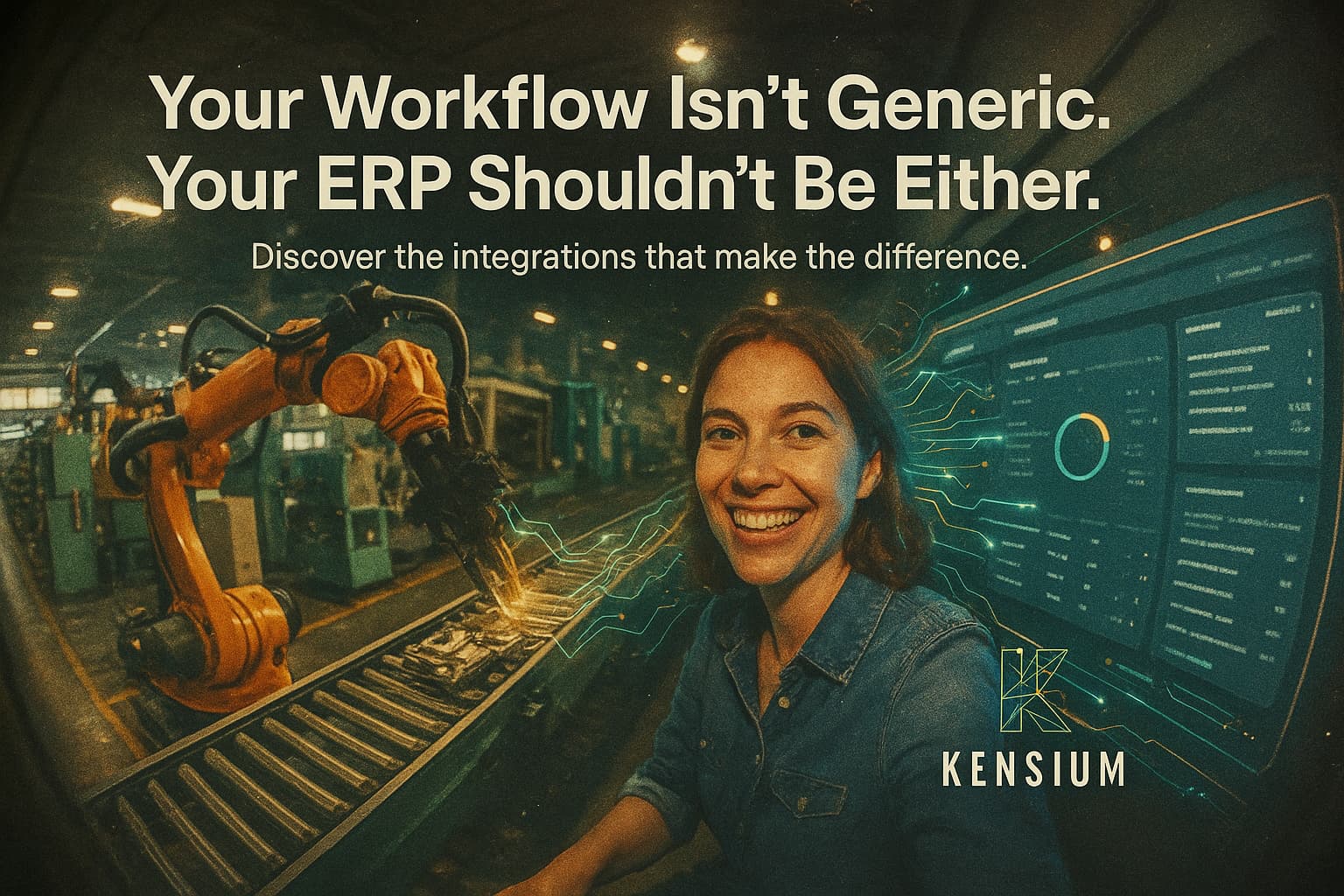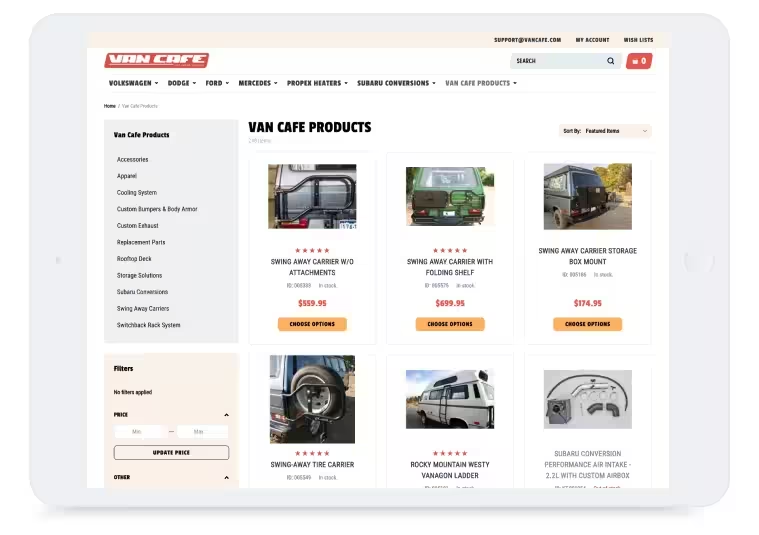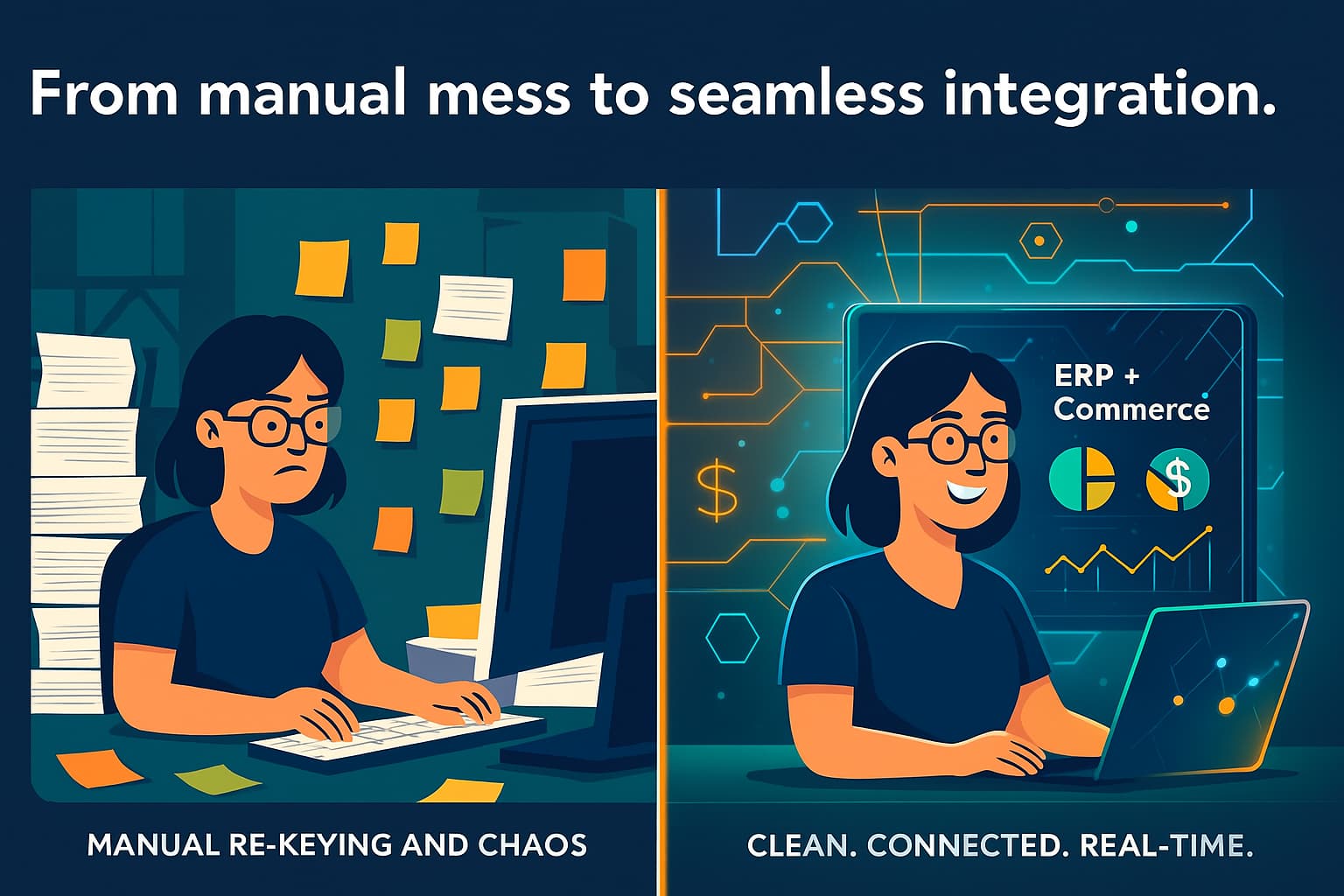
Every manufacturing business has quirks in its processes – from custom production steps to niche supply chain needs. It’s widely recognized that no single off-the-shelf software solution will perfectly fit every manufacturer[2]. Each company’s workflows, product lines, and business rules are unique, so trying to force a “one-size-fits-all” system can lead to compromises and workarounds. As one industry expert noted, “Every company is unique… an application developed for the average user can’t meet your business needs”. Instead of shoehorning your operations into generic software, it makes sense to tailor integrations and solutions to fit your business, not the other way around.
Unique Workflows Demand Custom Solutions
Manufacturers often find that even the best ERP platforms require customization to handle their particular mix of processes. Standard ERP modules might cover common needs (like inventory, finance, basic production planning), but specialized workflows – be it custom job scheduling, unique BOM configurations, or industry-specific quality checks – may not be fully addressed out-of-the-box. This is echoed by manufacturing leaders across forums and articles: there’s no single ERP or tool that covers all needs for all businesses[2]. In practice, companies end up extending or tweaking their ERP or connecting it with other systems to accommodate those “quirks” that make their operation unique.
For example, one Reddit discussion advised that instead of building a whole new system from scratch, it’s “much better off finding an off-the-shelf solution that suits your business and work with them to customize to your needs.” In other words, leverage a solid base (ERP or platform) but plan to customize integrations so the solution molds to your workflow rather than forcing you to change your workflow to fit the software. Big manufacturers and small job shops alike often invest in custom modules, plug-ins, or integrations – this could mean a custom scheduling module, a plugin for a niche compliance process, or an API integration to a legacy tool – to fill the gaps and ensure all their unique requirements are met.
Crucially, the goal of these custom ERP integrations is to avoid “boxing yourself into a closed system.” A flexible, open ERP that can integrate with best-of-breed applications (your specialized production software, eCommerce site, CRM, etc.) is ideal[4]. Manufacturers who choose rigid systems often find themselves limited when they try to innovate or scale. As Steve Cates, former president of Ray Allen Manufacturing, put it, “We wanted to avoid boxing ourselves into a closed system… [We needed] something with a robust foundation that would allow us to expand, rather than limit us.”[5] An open, integration-friendly platform lets you bolt on the tools you need and adapt as your business evolves – whether that’s adding an IoT sensor network next year or supporting a new distribution channel.
Tailored Integrations: Connecting ERP to Everything
Custom ERP integrations act as the “glue” that connects your central ERP system with the other applications, machines, and data streams that drive your manufacturing business. Rather than relying on manual data transfers or disconnected systems, integrations allow data to flow automatically between systems in real time, ensuring your entire operation stays synchronized. Here are a few areas where custom integrations make a critical difference for manufacturers:
- Production Scheduling & MES: Integrating specialized production scheduling software or MES (Manufacturing Execution Systems) with your ERP ensures unified, real-time data across departments for better coordination. For instance, a custom integration might connect your ERP’s work orders with an advanced scheduling tool on the shop floor. This synchronization enables accurate, up-to-the-minute production plans that factor in resource availability, demand forecasts, and inventory levels. The result is optimized capacity use, shorter lead times, and the agility to adjust schedules quickly when orders change or equipment goes down.
- Industrial IoT Sensors: Modern factories deploy IoT sensors on machines and throughout the production line. By connecting these IoT data streams into the ERP, you gain instantaneous visibility and responsiveness. Traditional ERP systems rely on delayed, manual data entry, but IoT integration closes that gap by feeding real-time machine data directly into the ERP. The outcome is a connected manufacturing ecosystem where, for example, sensor readings on temperature or vibration can trigger automatic ERP actions – maintenance work orders, schedule adjustments, inventory reorders – without human intervention. Such integrations enable predictive maintenance (preventing unplanned downtime) and up-to-the-minute production monitoring that simply isn’t possible with siloed systems.
- E-Commerce and CRM Systems: Many manufacturers today sell through online channels or manage complex B2B orders – integrating these front-end systems with the ERP is essential. A custom integration between your eCommerce platform (Adobe Commerce, Shopify, BigCommerce, etc.) and ERP will sync product data, orders, inventory, and customer info in real time. This eliminates manual order entry and inventory reconciliation, reducing errors and overselling. In fact, companies that unify eCommerce with ERP often see major efficiency gains and sales growth. (We’ll see a success story shortly.) Similarly, tying your CRM or customer service platform into the ERP gives your team a 360° view – quotes, orders, service tickets, and account history – all in one place. No more “swivel-chair” between systems, which means faster response times and happier customers.
- Legacy or Niche Applications: Many manufacturers use niche software for things like CAD drawings/BOM management, compliance tracking, or lab testing data. Rather than double-entering data, custom integrations can connect these applications to the ERP. For instance, if you use a specialized quality control software, an integration could push QC results into the ERP’s production record automatically. This ensures nothing falls through the cracks – all critical data ends up in your central system of record. Even older legacy systems (an old MRP or a homegrown database) can often be integrated via APIs or middleware. The key is identifying any remaining data silos in your operation and building bridges to the ERP so that your entire tech stack operates as one cohesive system.
Van Cafe, a manufacturer of aftermarket auto parts, is a great example of leveraging tailored integration. The company chose BigCommerce as its eCommerce platform specifically because BigCommerce offered a native connector for their Acumatica ERP – a crucial factor since they “use Acumatica for purchasing, accounting, manufacturing schedule management, and more”[9]. By deploying the BigCommerce-Acumatica ERP connector, Van Cafe seamlessly synced customers, products, orders, and inventory between the online store and backend ERP, handling the complexity of manufacturing operations unified with eCommerce[10].

Integrations like these can deliver transformative benefits. Real-time synchronization means your inventory counts, orders, and production status are always up-to-date everywhere. Double data entry is eliminated, along with the errors and delays it causes. Departments that used to operate in isolation start working from the same playbook – sales sees what production sees, which sees what purchasing sees, in one system. This visibility not only boosts efficiency but also empowers smarter decision-making (since managers are acting on current, accurate data). It’s no surprise that manufacturers who invest in custom ERP integrations often report improvements such as lower lead times, higher on-time delivery rates, reduced admin overhead, and more capacity to handle growth.
Kensium’s Approach to Custom ERP Integration
Kensium has built its solutions around the philosophy that integrations should adapt to the client’s business – not the other way around. We understand that manufacturers have a mix of systems and unique processes, so we meet you where you are with tailored integration solutions. Kensium’s integration engineers start by assessing your current tech stack (ERP, eCommerce platforms, warehouse systems, production apps, etc.) and your workflow “pain points.” From there, we design connectors or custom code to tie those pieces together into a cohesive, automated whole.
Importantly, Kensium doesn’t force a single rigid approach. We have a suite of pre-built connectors and accelerators for common platforms – for example, connectors to integrate Acumatica ERP with Adobe Commerce (Magento), BigCommerce, Shopify, and others – but we also customize and extend these as needed for each client. Whether you’re running Acumatica, NetSuite, Sage, or Microsoft Dynamics ERP, our team can connect it with your eCommerce storefronts, marketplaces, POS, CRM, IoT devices, or any other critical system. The goal is a unified commerce environment: data flows freely and accurately across all parts of your business.
Did you know? Kensium offers fully tailored ERP integration solutions to meet each business’s specific requirements, ensuring your systems are optimized for peak efficiency and scalability[11]. In other words, we don’t just plug it in and walk away – we make sure the integration is configured to support your workflow, with custom mappings, business rules, and even custom software development if necessary. And after go-live, our support team remains available to troubleshoot and fine-tune as your needs evolve.
Success Story: Custom Integration in Action
Let’s look at a real-world success story of custom ERP integration for a manufacturing business. Ray Allen Manufacturing – a provider of K9 training and pet products – had a complex operation involving manufacturing their own products, running multiple websites, and managing B2B and B2C sales. They knew a standard ERP alone wouldn’t suffice. Ray Allen needed a flexible system that integrated well with best-of-breed applications, including their manufacturing software and eCommerce sites[12]. They didn’t want to be stuck with a monolithic system that couldn’t talk to other tools. After evaluating options, they chose Acumatica cloud ERP for its open architecture and partnered with Kensium’s team of experts to implement a truly integrated solution.
The project involved connecting Acumatica ERP with several key systems: Ray Allen added JAAS Advanced Manufacturing Software (JAMS) – a manufacturing execution module – and integrated their Magento eCommerce storefront using Kensium’s Acumatica-Magento connector. The result was a seamless flow between online orders, inventory, and the production floor. Previously, separate systems required manual reconciliation; now, everything was tied into Acumatica as the single source of truth.
What was the outcome? In short, Ray Allen’s operations became significantly more efficient and poised for growth. According to their president, “Acumatica, paired with JAMS and Kensium’s Acumatica/Magento connector, streamlined Ray Allen Manufacturing, providing insight into operations, which allows the company to better serve customers – which in turn increases revenues and profits.”[13] By integrating their ERP with both the manufacturing module and the eCommerce platform, they eliminated data silos and manual work. They gained deeper visibility into production and sales, improved inventory accuracy, and sped up their order fulfillment and customer service processes. Ray Allen’s team noted improvements like faster order processing (with online orders automatically flowing into Acumatica and updating inventory), a 25% time savings in their call center (thanks to not flipping between systems), and improved confidence in data for decision-making[14][15]. In essence, the custom integration set them up with a scalable foundation – an open, flexible system that can expand with future growth rather than holding it back[16].
This success story illustrates why a “one-size-fits-all” mentality falls short for many manufacturers. It wasn’t a generic out-of-the-box setup that delivered these benefits – it was the careful customization and integration of the ERP with the company’s unique mix of applications and workflows. When done right, the payoff is tangible. In Ray Allen’s case, streamlining via integration led to better customer service and higher profits. Other manufacturers have seen similarly dramatic results. For example, Van Cafe (mentioned earlier) doubled their revenue after integrating eCommerce with their ERP, achieving a 119% increase in revenue post-integration[17]. These outcomes underscore that investing in custom integration is not just about IT alignment – it’s about enabling growth and efficiency that hits the bottom line.
Frequently Asked Questions
Q: Why can’t one ERP solution fit all manufacturing companies?
A: Because every manufacturing business is unique in its products, processes, and requirements. A feature that is critical for one manufacturer (e.g. complex job costing or lot traceability) might be irrelevant to another – and vice versa. Generic ERPs are built to cover broad needs, so they often lack the specialized functions or flexibility that specific factories need. As a result, achieving a perfect fit usually requires customization. It’s better to think of an ERP as a solid foundation or framework. From there, integrations and custom modules can be added to address the particular quirks of your operations (whether it’s a custom workflow for made-to-order production, integration to an existing tool you use, or any proprietary process). In short, “one-size-fits-all” rarely fits anyone just right in manufacturing, which is why tailored integrations are so important.
Q: What systems or tools can be integrated with an ERP to support unique workflows?
A: Virtually any system that manages data or processes in your business can be integrated with your ERP – if you have the right expertise. Common integrations for manufacturers include: production scheduling/MES software, which can bi-directionally sync schedules, work orders and job status with the ERP; IoT sensors and machine controllers, which feed real-time equipment data (like machine uptime, temperatures, counters) into the ERP for live monitoring and automatic alerts; eCommerce platforms and marketplaces, to automatically handle online orders, inventory updates, and customer info; CRM and customer service systems, so that quotes, sales, and support cases tie into one record; warehouse management systems (WMS) or shipping software, to streamline fulfillment and logistics; and any other niche tools (quality control apps, PLM/CAD systems for engineering data, etc.) that your business relies on. The key benefit of integration is eliminating silos – when all these systems communicate with the ERP, you gain one cohesive environment instead of disparate islands of information. This leads to better coordination and less manual effort.
Q: How does Kensium customize ERP integrations for a client’s needs?
A: Kensium follows a consultative, flexible approach to integration projects. We don’t push a single cookie-cutter solution. First, our team learns about your current systems and pain points – for example, you might be running Acumatica ERP and Shopify, plus a custom MES on the shop floor. We identify the data flows that need to happen between these systems (say, sending web orders to the ERP, or pushing production status back to the web store, etc.). Then we leverage our library of connectors and our development expertise to create a solution. In some cases, we use or modify an existing pre-built connector (we have connectors for Adobe Commerce–Acumatica, BigCommerce–Acumatica, Shopify–Acumatica, NetSuite, Sage, and more). In other cases, we build a custom integration using APIs or middleware. Throughout, the integration is configured to enforce your business rules and data mappings – essentially tailored to your workflows[11]. After implementation, we rigorously test the end-to-end processes and provide training. Kensium also offers ongoing support and can adjust the integration if your processes change or you add new systems. The end result is an integration that feels like a natural extension of your ERP, because it was literally built around your specific needs.
Q: Does investing in custom integrations really pay off for a mid-sized manufacturer?
A: Yes, and often quite quickly. While there is an upfront cost to develop and implement custom integrations, the efficiency gains and error reduction can lead to rapid ROI. Think about the manual work that integration eliminates – employees no longer re-key orders from one system to another, inventory counts update automatically, reports that used to take hours to compile can be generated in seconds. This saves labor time and prevents costly mistakes (like shipping an order late because data wasn’t updated). Moreover, integration can unlock growth: it enables you to handle higher order volumes or more product lines without a linear increase in headcount. The experience of several Kensium clients illustrates this payoff. For instance, after Kensium integrated one client’s ERP with their eCommerce and fulfillment systems, they saw double-digit percentage improvements in productivity and a significant boost in sales. In the Van Cafe case, integrating BigCommerce with their Acumatica ERP helped drive a 119% increase in revenue in just a year[17], in part because the business could scale online orders smoothly and keep customers happy with accurate stock information. While results vary, the competitive advantage gained by having a streamlined, integrated operation is substantial. In today’s market, manufacturers that connect their systems effectively can respond faster, reduce overhead, and deliver better customer service – all of which absolutely pay off in the bottom line.
Q: We have an older legacy system in place – can it still be integrated, or do we need to replace it first?
A: In many cases, it’s quite possible to integrate legacy or older systems with a modern ERP, thanks to various tools and approaches. If your legacy system (for example, an old custom database or a niche production control system) has any form of data export, API, or even direct database access, an integration layer can be developed to connect it to the ERP. This might involve using middleware or building an interface that translates data between the old system and the new. It’s often a wise interim step to integrate rather than rip-and-replace everything on day one. By integrating your legacy tool with the ERP, you gain some immediate benefits – data consistency, less double entry – while planning for a longer-term phase-out if desired. Kensium’s team has experience in creating bridges between older software and new platforms, allowing our clients to modernize at their own pace. Of course, every case is unique: part of our discovery process is evaluating the technical feasibility and ROI of integrating a particular legacy system. If the legacy system truly cannot connect outward in any form, then it might indeed make sense to migrate off it. But more often than not, we find a way to link it up so you can keep operations running and improve efficiency, without an overnight overhaul. This kind of staged integration approach can reduce risk and disruption as you digitally transform your company.
In summary, manufacturing operations thrive on efficiency and accuracy – and achieving that requires software that fits like a glove. No generic solution will check every box for every business. Kensium’s experience with countless manufacturers has shown that embracing custom ERP integrations is the way to get that perfect fit. By connecting and customizing systems – ERP, production, IoT, eCommerce, and beyond – you unlock new levels of productivity, visibility, and service quality. “One size doesn’t fit all,” but with the right integrations, you can build a solution that fits your business perfectly. The end result is a streamlined workflow that adapts to your quirks, rather than forcing you to change, and a platform for growth that can scale and evolve as you do. That’s the power of custom ERP integrations – turning your unique processes into a competitive advantage. [13][17]
[2] 10 Strategies to Streamline the Manufacturing Process | NetSuite
https://www.netsuite.com/portal/resource/articles/erp/streamline-manufacturing-process.shtml
[4] [5] [12] [13] [14] [15] [16] Ray Allen Manufacturing - Successful implementations of ERP system
https://www.kensium.com/blog/ray-allen-manufacturing-successful-implementations-of-erp-system
[9] [10] [17] Van Cafe Case Study | BigCommerce
https://www.bigcommerce.com/case-study/van-cafe/
[11] Ecommerce ERP Integration for Magento, Shopify & BigCommerce








.png)


















































-small.jpeg)







